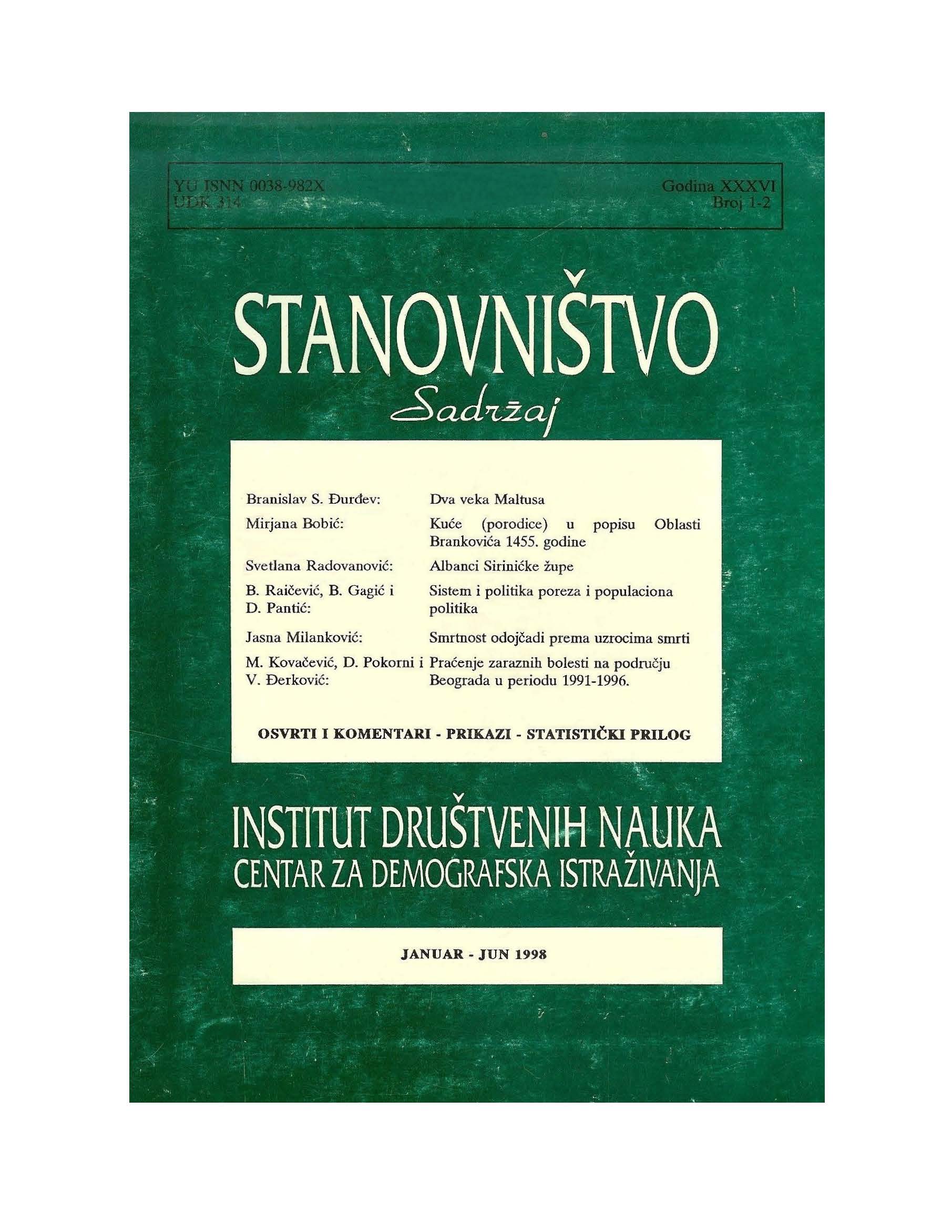Houses (Families) in the 1455 Census for Brankovića Region
Main Article Content
Abstract
The article presents the second part of a broader research of historic family in Serbia based on the 1455 fiscal census of the population in Brankovića region (the territory of today's Kosovo). Processing of the empirical data following theoretical and historical analysis of agricultural family in the Middle Ages as a typical form of domestic life in the past, has brought totally unexpected results. Contrary to the usual scientific understanding of old Serb family as a large patriarchal, numerous community of a father and his descendants and relatives (both along horizontal and vertical lines), classification and numerical analysis derived from the empirical findings of this specific census have pointed that small or independent groups prevailed. When, however, the analysis is made on the aggregate level, the results are quite the opposite. Namely, though small individual groups were more numerous, a greater portion of taxpayers (adult, economically active, primarily male, population) registered in the villages in the document were gathered in more complex family communities (brotherhoods and paternity). By type, that is, internal composition of members, complex domestic unions were most often the alliances between two brothers. This conclusion corresponds to the findings of international anthropological and historical demographic studies.
Downloads
Article Details

This work is licensed under a Creative Commons Attribution-NonCommercial 4.0 International License.
Published by the Institute of Social Sciences - Center for Demographic Research





